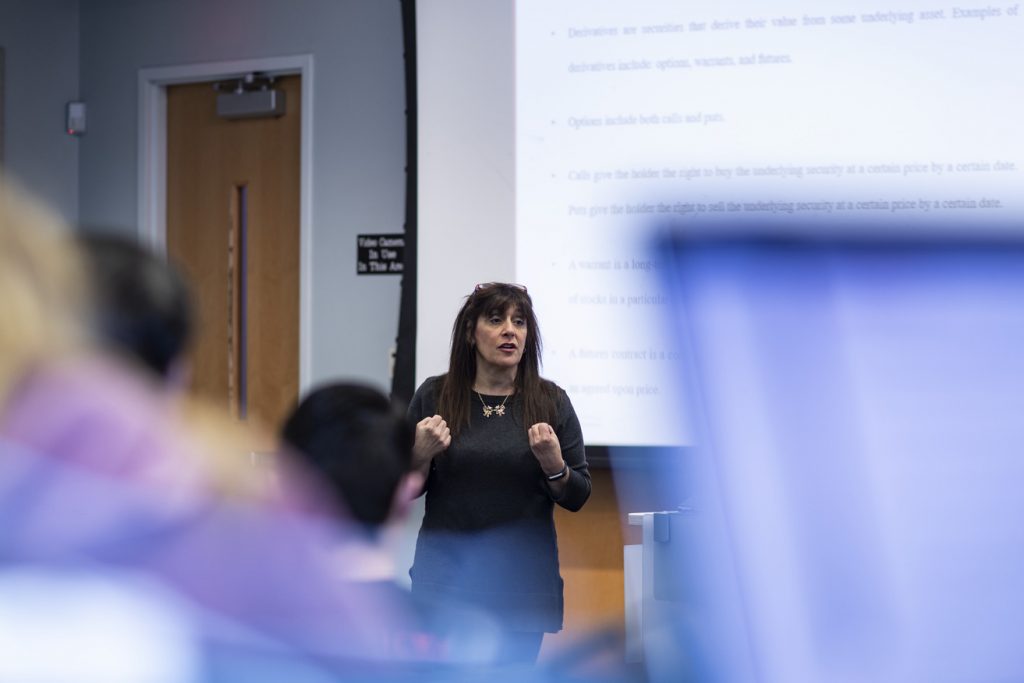Cheating happens. But what can faculty and staff do to help combat cheating with empathy? Help students understand the importance of academic honesty, and how to avoid issues when writing and submitting work.
Carly Papenberg, director of instructional design for Online and Digital Learning, and Matthew Kunkle, senior associate director of Analytics and Accreditation, share tips to keep in mind as faculty members prepare course syllabi and assignments.
Review the policies
Temple has a long and robust academic honesty policy that describes plagiarism, cheating and what academic honesty and impropriety include. Understand what these are and convey them to your students. Emphasize what you value, what the school and university value and what’s at stake should a student violate the policy.
We often overlook that students may not have a comprehensive understanding of what academic integrity entails and why it is important for them to consider—and value too. With students coming from different backgrounds, explicit discussion around cheating and academic integrity are key to ensure everyone is on the same page.
Understand student motivation
There is a lot of research surrounding student motivation. What keeps them engaged? What makes them inclined to take the “easy” way out and cheat?
Talk to your students. Understand why they are in your class and what they hope to take away from the course. Situate the course within the context of the overall curriculum, their major and how these skills and concepts apply to their future careers. Take advantage of the parts of your class that are exciting to them. Connect to real-world examples to apply course concepts and outcomes, which promotes student motivation (Debnath et al., 2007, p.812-831).
Assignment flexibility is also a good way to have students showcase their knowledge and bring in their backgrounds. When students connect to their assignments, they can better extrapolate their knowledge, leverage creativity, think critically and ultimately master outcomes. For example, instead of just giving a test, ask students to prepare a paper, create a visual to display their knowledge, or interview and analyze an expert. Changing the assignment type lets students use their strengths to showcase their knowledge.
Create an environment of trust
Let students know they are “innocent until proven guilty.” While cheating and academic dishonesty do happen, come into all classes with an open mind and positive attitude, allow students to know what your expectations are and identify what is not acceptable to set the tone. Be open-minded—not all students cheat or intend to cheat. Let them know you want to work with them and want to help rather than accuse them. Positive, informed language can help move things along and keep trust from the students to seek help when they need it.
By building trust and a culture of open communication, students can reach out if the workload is too much, ask questions and create a dialog to enhance their learning and motivations. Developing a culture based around a class of openness, honesty and self-motivation can enhance learning and build student authority over their educational goals and outcomes.
Avoid opportunities and temptations.
There are a number of ways to develop assessments that can strategically discourage and make it more challenging to cheat. Implementing these tactics offers more robust opportunities for students to showcase their knowledge and provide a more universal design to learning for learners that prefer different approaches.
- Design using Universal Design: While multiple choice exams are an easy option to grade, particularly for large classes, they are often problematic for learners with different learning preferences and styles. Design assessments with alternative options for students. This may mean letting students choose from a few assignment options, creating a visual representation of their knowledge, or writing an essay (Burgstahler & Cory, 2008).
- Create pools: When possible, create large, robust question pools to randomize the questions students receive. Creating pools of “hard,” “medium” and “easy” questions can be done to ensure students get a certain number of each but not the exact same questions. Canvas enables easy pool creation that assigns students with a randomly selected number of questions so you can be assured students will not have the same exams.
- Adjust questions and pools regularly: There are many reasons you may want to reuse an exam. However, it is best to update questions and question pools regularly to ensure students do not share previous content. This is helped by creating large question pools and adding to them regularly.
- Design your time wisely: A 30-question exam may only need 30 minutes or it could warrant 100 minutes. Look at your questions and design the time students have to complete it with great care. The more time they have, the more opportunities there are to look up or revise their work. By timing your exam properly, students will have to assert their knowledge quickly and keep moving which can deter the need or desire to search for alternative solutions.
- Develop some open-ended questions: Consider adding short answer or essay questions to provide students with the opportunity to share their knowledge in their own unique way. Written questions allow you to clearly and closely look for writing patterns for any similarities among students.
- Self-proctor exams: Whether remote, on-campus or hybrid, there are ways to proctor your exam. When in-person, walk around the room and let students know that accessing any materials outside of the exam (or on the web, if the exam is computer-based) is strictly prohibited. If using Zoom to proctor, use the Gallery view to see students as they take their exams. Require students to turn on their cameras and be seen for the duration. If you prefer or have limited time during class, allow students to record themselves taking the exam via Zoom. Though having students record themselves requires extra work to review and validate, it also promotes student accountability to prove they can follow instructions.
